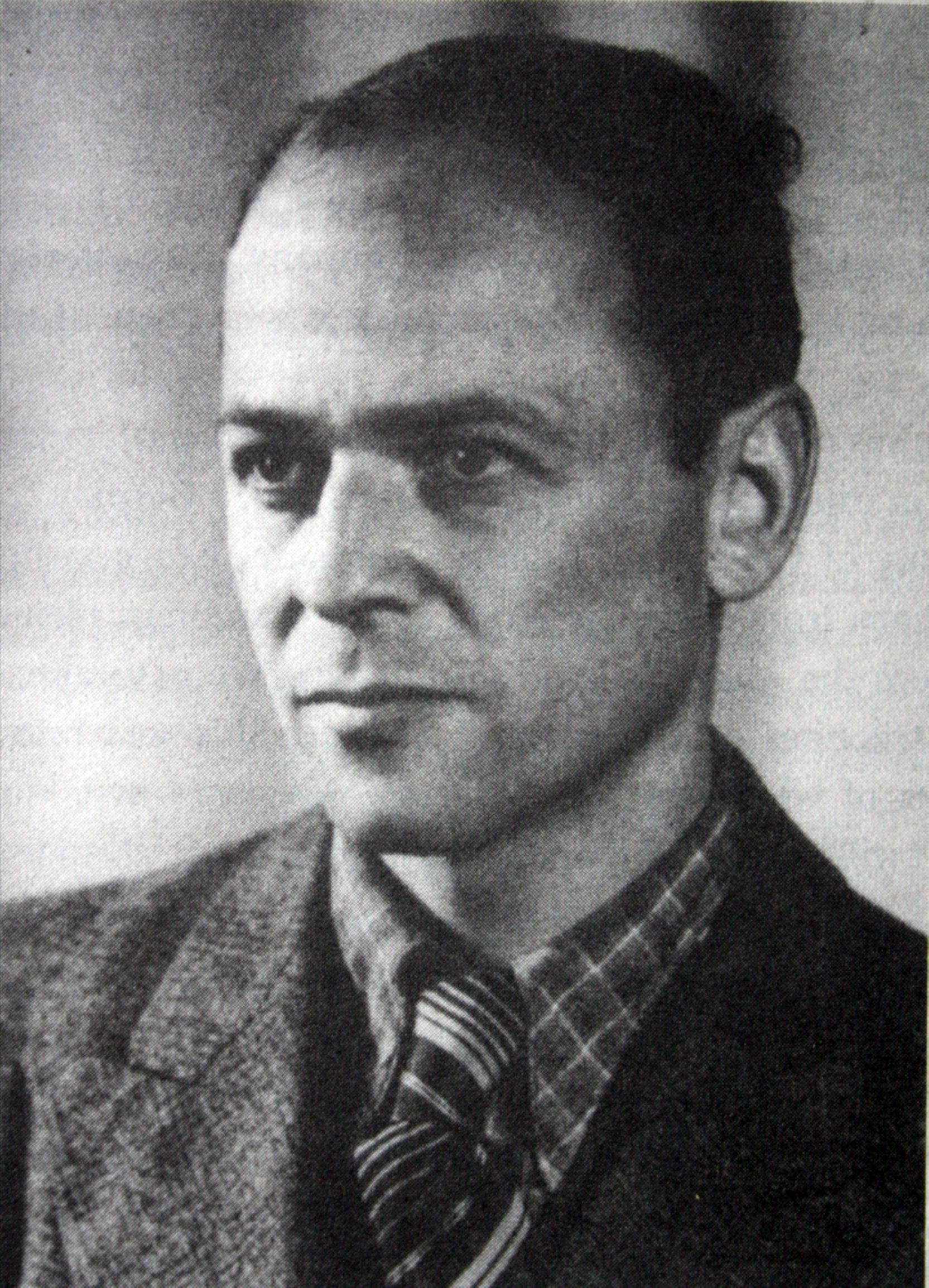Rudolf Kaufmann on:
[Wikipedia]
[Google]
[Amazon]
 Rudolf Kaufmann (3 April 1909 – c. 1941), son of the physicist Walter Kaufmann, was a palaeontologist and geologist, and is best remembered for his work on allopatric speciation and punctuated equilibrium in the trilobite genus '' Olenus'' in the Upper Cambrian of
Rudolf Kaufmann (3 April 1909 – c. 1941), son of the physicist Walter Kaufmann, was a palaeontologist and geologist, and is best remembered for his work on allopatric speciation and punctuated equilibrium in the trilobite genus '' Olenus'' in the Upper Cambrian of
Tyskforlaget
 Rudolf Kaufmann (3 April 1909 – c. 1941), son of the physicist Walter Kaufmann, was a palaeontologist and geologist, and is best remembered for his work on allopatric speciation and punctuated equilibrium in the trilobite genus '' Olenus'' in the Upper Cambrian of
Rudolf Kaufmann (3 April 1909 – c. 1941), son of the physicist Walter Kaufmann, was a palaeontologist and geologist, and is best remembered for his work on allopatric speciation and punctuated equilibrium in the trilobite genus '' Olenus'' in the Upper Cambrian of Sweden
Sweden, formally the Kingdom of Sweden,The United Nations Group of Experts on Geographical Names states that the country's formal name is the Kingdom of SwedenUNGEGN World Geographical Names, Sweden./ref> is a Nordic country located on ...
and on the island of Bornholm
Bornholm () is a Danish island in the Baltic Sea, to the east of the rest of Denmark, south of Sweden, northeast of Germany and north of Poland.
Strategically located, Bornholm has been fought over for centuries. It has usually been ruled by ...
. He was a brother-in-law of Curt Teichert
Curt Teichert (May 8, 1905 in Königsberg, East Prussia – May 10, 1996 in Arlington, Virginia) was a German-American palaeontologist and geologist, noted for his contributions to geology, paleozoic stratigraphy and paleontology, Cephalopoda ...
, the well-known German-American palaeontologist and geologist. Studying the Upper Cambrian alum shales in Sweden, Kaufmann found that the trilobite genus ''Olenus'' occurred in an unbroken sequence of sediments covering a considerable period of geological time. He was thereby in a position to track the phylogenetic evolution of ''Olenus'', that is, the rise and fall of species within the genus and the changes in their morphology. He coined the idea of ''Artabwandlung'', which is the tendency of clade elements in the same environment to show the same morphological trends.
With the 1930s onset of the Nazi regime in Germany, Kaufmann, who was a Jew, was dismissed from his position at Greifswald University. He had studied at Königsberg and at Greifswald University under Serge von Bubnoff (1888–1957). His 1933 dissertation dealt with speciation and punctuated equilibrium in Cambrian trilobites in Skåne
Scania, also known by its native name of Skåne (, ), is the southernmost of the historical provinces (''landskap'') of Sweden. Located in the south tip of the geographical region of Götaland, the province is roughly conterminous with Skåne C ...
.
He left Germany for Copenhagen in 1933. Here, he was denied employment as a geologist, and so, he worked as a photographer and gave instruction in athletics. He found himself ill at ease in Denmark, and after a spell in Italy, he returned to Germany, where, in October 1935, he started teaching at a Jewish school in Coburg, and was arrested on a charge of " Rassenschande" (he was being treated for a sexually transmitted disease acquired from an affair with an "Aryan" woman). In 1936, he was sentenced to 3 years of hard labour. On his release in 1939, Kaufmann fled to Lithuania
Lithuania (; lt, Lietuva ), officially the Republic of Lithuania ( lt, Lietuvos Respublika, links=no ), is a country in the Baltic region of Europe. It is one of three Baltic states and lies on the eastern shore of the Baltic Sea. Lithuania ...
, where he was allowed to settle and resume geological work. When Lithuania became part of the U.S.S.R. in 1940, he joined the staff of the Geological Survey at Kaunas
Kaunas (; ; also see other names) is the second-largest city in Lithuania after Vilnius and an important centre of Lithuanian economic, academic, and cultural life. Kaunas was the largest city and the centre of a county in the Duchy of Trakai ...
, immersing himself in the problems of Pleistocene drift, and marrying a fellow refugee. After the German occupation of Lithuania in 1941, and now an "undesirable Jew", he was identified while cycling on a country road and murdered by two German soldiers.
Earlier, in his search for work, he had moved to Italy and found work in a photographic shop in Bologna. There, in the summer of 1935, he met Ingeborg Magnusson, a 28-year-old Swedish woman on holiday. This relationship was to last five years, during which period they spent 13 days together - he visited her once in Stockholm, and she saw him once in Germany. These details came to light in 1991, when a German stamp collector bought a package of 30 letters, written by Kaufmann to Ingeborg, at a Frankfurt stamp auction.
Some Publications
* ''Die Klufttektonik des Kambrosilurs von Gotland, Oeland und dem Kalmargebiet.'' Geol. Rundschau, vol. 22, pp. 292–306. 1931. * ''Ueber Jurageschiebe aus Ostpreussen.'' Zeitsch. f. Geschiebeforsch., vol. 8, pp. 73–75. 1932. * ''Variationsstatistische Untersuchungen über die "Artabwandlung" und "Artumbildung" an der Oberkambrischen Trilobitengattung Olenus'' DALM. Abb. Geol.-Pal. Inst. Univ. Greifswald, Heft X. 1933. pp. 1–54. * ''Die Einstufung der Olenus-Arten von Bornholm.'' Palaeont. Zeitsch., vol. 15, pp. 57–63. 1933. * ''Exakt nachgewiesene Stammesgeschichte.'' Die Naturwissenschaften, vol. 22, pp. 803–807. 1933. * ''Exakt-statistische Biostratigraphie der Olenus-Arten von Südöland.'' Geol. Foren. Stockholm Forhandl., 1935, pp. 19–28. * ''Zur Tektonik des Grundgebirges von Bornholm.'' Geol. Rundschau, vol. 24, pp. 379–389. 1935.Bibliography
''Paper Kisses'' - Reinhard Kaiser (Other Press, 2006)External links
Tyskforlaget
References
{{DEFAULTSORT:Kaufmann, Rudolf German paleontologists 1909 births 1940s deaths German Jews who died in the Holocaust German emigrants to Denmark